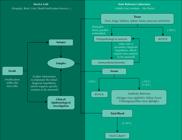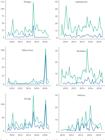ABSTRACT
OBJECTIVE To evaluate the performance of post mortem laboratory analysis in identifying the causes of hemorrhagic fever and/or neuroinvasive disease in deaths by arbovirus infection.
METHODS Retrospective cross-sectional study based on the differential analysis and final outcome obtained in patients whose samples underwent laboratory testing for arboviruses at the Pathology Center of the Adolfo Lutz Institute, in São Paulo, Brazil.
RESULTS Of the 1355 adults clinically diagnosed with hemorrhagic fever and/or neuroinvasive disease, the most commonly attributed cause of death and the most common final outcome was dengue fever. Almost half of the samples tested negative on all laboratory tests conducted.
CONCLUSION The failure to identify the causative agent in a great number of cases highlights a gap in the diagnosis of deaths of unknown etiology. Additional immunohistochemical and molecular assessments need to be added to the post-mortem protocol if all laboratory evaluations performed fail to identify a causative agent. While part of our findings may be due to technical issues related to sample fixation, better information availability when making the initial diagnosis is crucial. Including molecular approaches might lead to a significant advancement in diagnostic accuracy.
Autopsy. Hemorrhagic Fevers; Viral; etiology. Arbovirus Infections; mortality

 Surveillance of hemorrhagic fever and/or neuroinvasive disease: challenges of diagnosis
Surveillance of hemorrhagic fever and/or neuroinvasive disease: challenges of diagnosis Thumbnail
Thumbnail
 Thumbnail
Thumbnail

 Green line – number of deaths linked to a given differential diagnosis. Blue line – number of cases that received that final diagnosis (e.g., from the top left panel is the number of cases that received a final dengue diagnosis). In the “All ddx” panel (bottom left) the black line refers to all cases of suspected arboviral infection (whole dataset) and the blue line those cases that received a final diagnosis. The temporal aggregation is on a seasonal level.
Green line – number of deaths linked to a given differential diagnosis. Blue line – number of cases that received that final diagnosis (e.g., from the top left panel is the number of cases that received a final dengue diagnosis). In the “All ddx” panel (bottom left) the black line refers to all cases of suspected arboviral infection (whole dataset) and the blue line those cases that received a final diagnosis. The temporal aggregation is on a seasonal level.